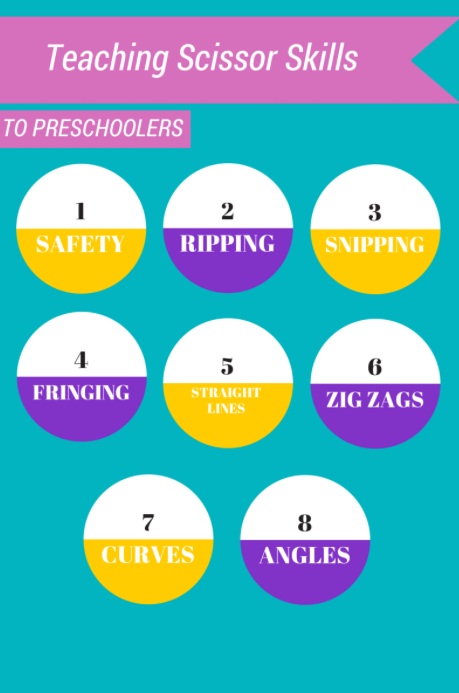Teaching Scissor Skills to Preschoolers

The Importance of Scissor Skills for Preschoolers
We all have fond memories of sitting around little tables at preschool and kindergarten cutting and pasting picture after picture into our scrapbooks. While to children these activities are just a fun and normal part of their day, what they don’t realise is that every rip, snip, zig-zag, curve and angle they cut is actually helping to develop their fine motor skills and hand-eye coordination – two skills that are absolutely essential for learning how to write.
So what scissor skills need to be taught to children? There are eight main skills that need to be developed. Here they are in sequential order, from the most basic (and important!!) skill of scissor safety, to the most complex skill of cutting angles.
Scissor Safety
Before children go anywhere near scissors it is so important that they are taught scissor safety! Make sure all cutting takes place at a table while your child is sitting down. It’s also a great idea to buy a pair of child-friendly scissors to avoid any accidental cuts!
Ripping
Before children are introduced to cutting they need to learn how to rip paper. This skill involves teaching your child to tear the paper in opposite directions at the same time.
Snipping
Snipping involves cutting a piece of paper once only. Snipping must be mastered before repetitive cutting can occur, as it builds the muscles needed to use scissors for a longer period of time.
Repetitive Cutting or Fringing
This involves the child making one cut into a piece of paper, removing the scissors and then making another cut – in other words, snipping but over and over again.
Cutting in Straight Lines
There are many activities and free printables available that help children to learn to cut in straight lines. Alternatively, you can rule a line on a sheet of paper and ask your child to cut along it.
Zig Zag Cutting
Once your child has mastered cutting in straight lines, it’s a great idea to introduce zig zag cutting. This involves coordinating movement of both the hand and paper at the same time.
Curves
Cutting curves is a difficult scissor skill for many children to master as it involves rotating the paper at the same time as cutting. Practise on a range of different shapes, including hearts, circles and ovals.
Cutting angles
A great deal of hand-eye coordination is required when cutting angles. The child must be able to visually line up their second cut with the spot where their first cut ends. Cutting out stars is a great way to develop this skill.













